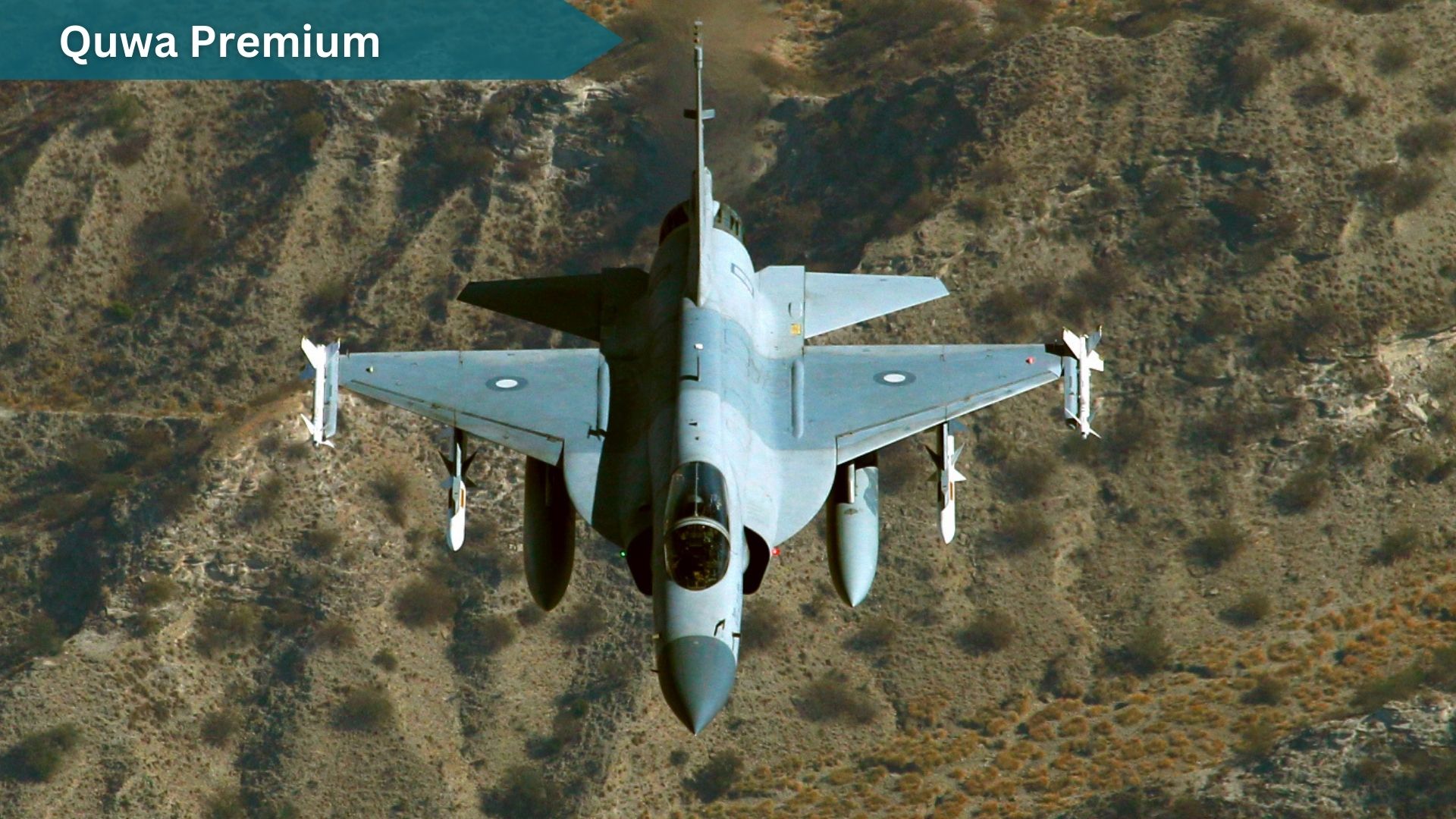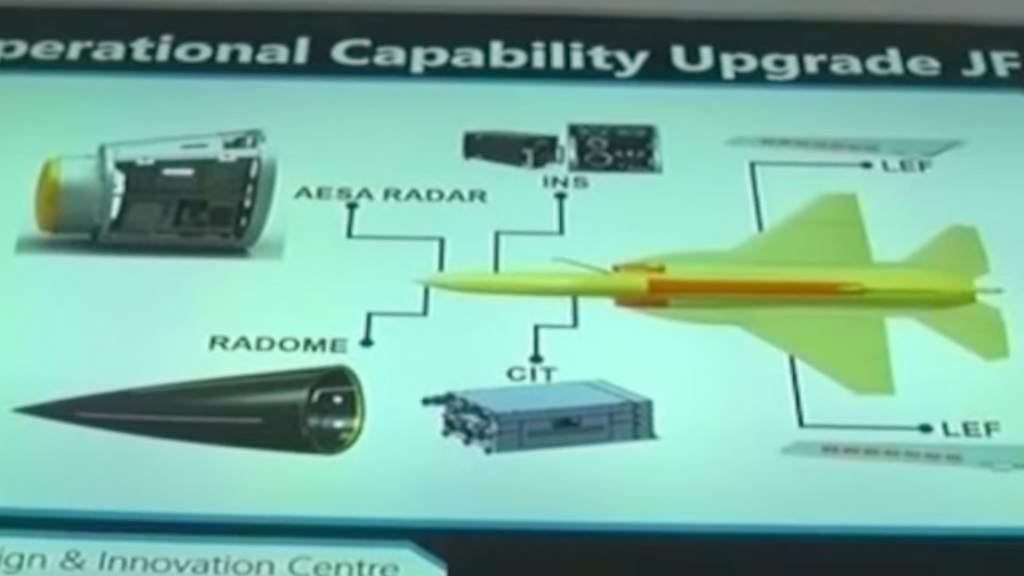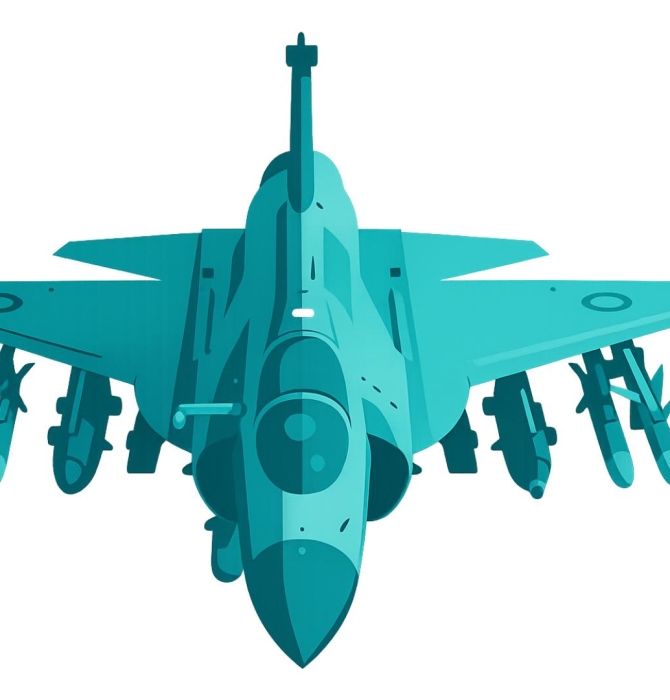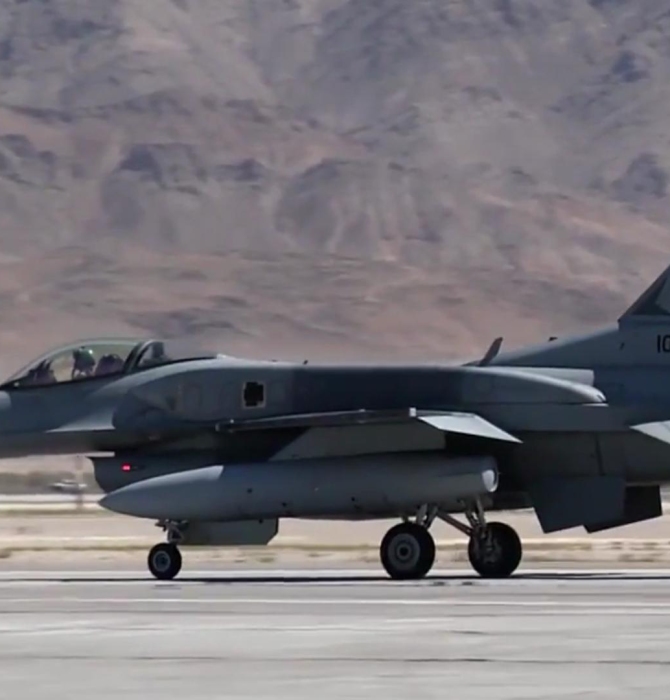8184Views

PAF’s NASTP Sets Upgrade Path for JF-17 (or ‘PFX Alpha’) Quwa Premium
During the 2024 International Defence Exhibition and Seminar (IDEAS 2024), the Pakistan Air Force’s (PAF) National Aerospace Science and Technology Park (NASTP) revealed that the JF-17 Thunder will undergo an ‘Operational Capability Upgrade’ (OCU). NASTP is also designating this JF-17 OCU project as ‘PFX Alpha’, indicating that it is the first sequential step towards the future PFX fighter program.
Currently, it seems that the primary task of the JF-17 OCU (or PFX Alpha) is to upgrade the Thunder’s radar and avionics suite and, potentially, integrate the fighter with additional air-to-air and air-to-surface munitions, especially homegrown solutions like the Rasoob 250 and AZB-81LR, among many others.
However, while the task of the OCU is to upgrade the fighter with new subsystems, the goal is deeper: it might be the PAF’s first major step towards independently managing the Thunder platform.
The JF-17 Vision Coming to Life
Since the JF-17’s introduction to the PAF combat aircraft fleet, there had been an underlying gap in the imagined goals of the fighter and the reality of Pakistan’s aerospace capacity. Basically, while the JF-17 was supposed to be a fighter free of political and technical strings, the reality was that Pakistan was still reliant on China in critical areas, such as subsystems and munitions integration.
This gap may have come to a head when the PAF was evaluating its options for an active electronically scanned array (AESA) radar for use on the JF-17 Block-3. Reportedly, a major reason why the PAF was not able to select the Leonardo Grifo-E was because neither the Aviation Industry Corporation of China (AVIC) nor Leonardo would agree to share their respective source-codes.
Though far from a guarantee, the PAF could not view the Leonardo Grifo-E as a serious option, despite it leveraging newer gallium nitride (GaN) technology for its transmit/receive modules (TRM), for example. It was categorically discounted due to a technical ‘string’. However, even if the PAF could source munitions from Europe, it lacked the technical capacity to carry out the integration work without AVIC’s help. Hence, the PAF was not necessarily emerging out of that situation in line with its best interests.
In 2020, the PAF began taking steps to close this gap by establishing a new integration facility to manage subsystem and weapon system integration onto the JF-17. Since then, the PAF integrated several original munitions to the Thunder, including air-launched cruise missiles (ALCM) like the Ra’ad–series, AZB-series of precision-guided bombs (PGB), and the Aselsan ASELPOD advanced targeting pod.
Now, with the JF-17 OCU / PFX Alpha, the PAF is aiming to take control of electronics stack – i.e., radar, electronic warfare (EW), avionics, and possibly even electro-optical (EO) systems – to design and build a package that shapes the JF-17 into the no-compromise solution Air Headquarters (AHQ) envisioned.

A Greater Focus on Localization
One of the goals the PAF set with Project PFX is to establish “total technological control” of the platform. In other words, the PAF should be able to freely decide upon, integrate, and deploy the inputs or subsystems of its choosing onto the platform…
End of excerpt (509/1,920 words)
Existing Quwa Premium members can log in below
Note: Logged in members may need to refresh the article page to see the article.


